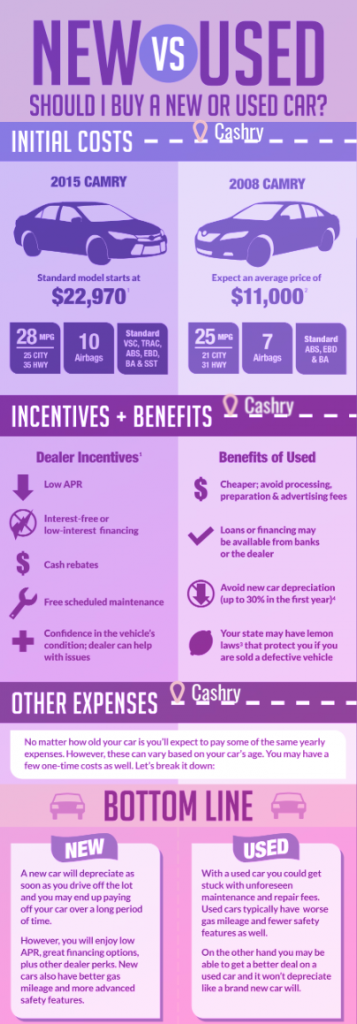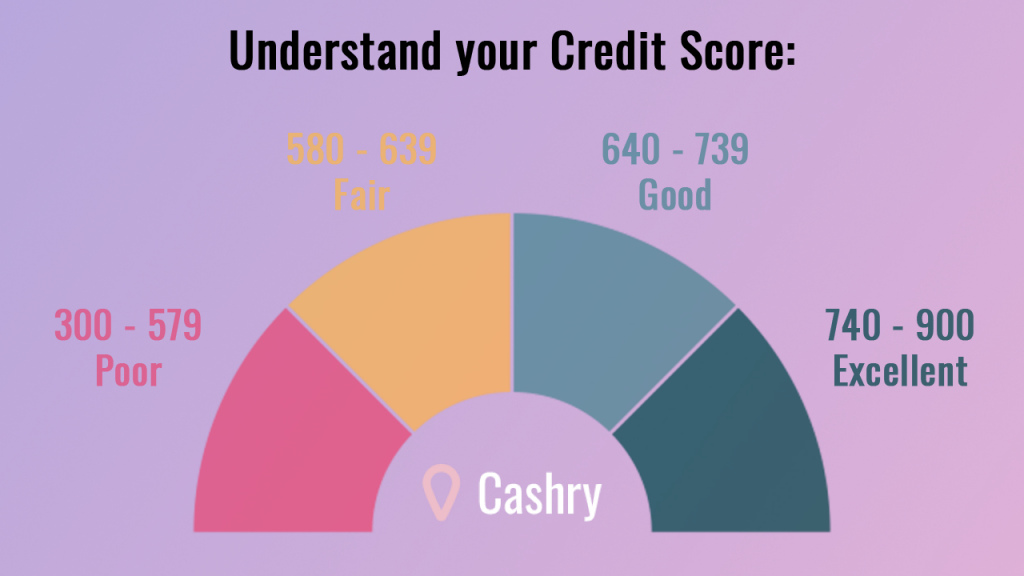How to Buy a Car with Bad Credit

When you have bad credit or no credit, you need a strategy to obtain a loan, especially a larger loan like a car loan or a mortgage. This blog examines the strategies you can use to secure a bad credit auto loan so you can buy a car or truck that makes your life easier.
Before you go bad credit loan shopping, know that you have a lot of options. Some work faster than others. Some require asking for help. Others require improving your credit first. Read through each and then, honestly assess your situation.
How to Buy a Car with Bad Credit
When considering How to Buy a Car with Bad Credit, realize that the best choice for you might differ from that of your sibling or best friend even though your situations bear resemblance. Let’s go through a few points that influence how you handle the situation of obtaining a loan with bad credit or no credit established at all.
Many people will find only one aspect applies to their situation. While others might find that multiple points apply to them. The latter will probably need to combine their approaches and consider that it might take a few months or require an alternative lender.

1st Scenario: You need the vehicle now as opposed to waiting a few months.
It happens. You come across a terrific job opportunity or you gain entry to the college or university you want to attend. You need a way to get there though. Perhaps you live in an area without mass transit or you live outside of the area it serves. Maybe the job you want requires a vehicle. Anyway, the conclusion is the same: You need the vehicle now!
1. Find a co-signer.
When you need the vehicle immediately, one of the two main options consist of finding a co-signer for an auto loan. This option likely means asking a parent or sibling (or even a friend?) to co-sign the loan for you. That means they use their good credit and name to help you obtain the loan. However, your name remains the main one on the loan.
You must make the payments on time and in full. Every payment gets reported to the credit bureaus under both your name and the co-signer’s one. If you start missing payments, the co-signer either steps in and assumes them or you give the car back before it gets repossessed. This works quickly if you have someone you could ask to co-sign for you.
Don’t worry if you don’t have someone to co-sign: you still have many options.
2. The Bad Credit Loan Option On Your Own
The second main option you can decide to go with, is using a financial lender that specializes in bad credit loans. However, better to make it clear: You will have to pay more by using this option. We’re not talking loan shark expensive, but it could be pretty costly. Think in the ballpark of 25 percent (25%) interest rates. Your bargain $10,000 new vehicle would actually cost $12,500. You just get to spread the cost out throughout a few years’ worth of payments.
You need to obtain a loan from a financial lending institution on your own. That requires devoting a bit of time to finding a lender, shopping around using a service like Cashry to find a lender that caters to low credit score individuals. Many specialize in this area, but you will not necessarily meet their criteria, nor will they meet yours. Before applying for a loan, you need to make sure that you will be able to not miss any payment. If you think this option might be the right one, you can use this widget below to have a glance at some lenders. We partnered with HiFiona to develop it so you can benefit from the expertise of Fiona to find a lender which might match your expectations.
Remember: When applying for a loan, wait for an answer and do not apply for the next one until you have received a “no” from the current potential lender. That helps your credit score remain as healthy as possible because each loan application requires a hard hit to your credit report. Each one of those deducts between two and five points from your score and you need those points if you have bad credit. It means, for instance, that if you applied for three loans all at once, you deducted up to 15 credit score points at one time. By applying for one at a time, you only deducted points at up to five a time, plus you stopped at a 10-point loss if it only took two applications to obtain a loan.
3. Buy a Used Car
Getting a used car instead of a new car can also be a solution. This instantly saves you thousands of dollars plus reduces the amount of interest you pay. It could save you from needing a loan at all.
Choosing to purchase a used vehicle does not mean sacrificing quality. Many vehicle manufacturers have internal programs for refurbishing vehicles used in corporate lease programs. These fleet vehicles typically remain in a corporation’s fleet for three years or less. The company trades them in for new vehicles, obtaining a discount on the replacement vehicles at the dealership. The dealership participates in the vehicle manufacturer’s program for used cars. When they come from a fleet, the car industry refers to them as program cars. You can purchase one of these cars for a little less than two-thirds of the cost of a new one and still obtain a manufacturer’s warranty plus a dealer service plan.
Program cars usually consist of sedans, conversion SUVs, and minivans. They were probably used for state-to-state travel or making deliveries by the company that owned or leased them.
Many auto dealerships also start their own program to re-certify the vehicles brought to them as trade-ins. These may provide a local warranty and service plan. These vehicles typically sell for even less than the program cars. You could potentially find a decent vehicle for between $1,000 to $5,000. In the case you had, for instance, about $1,000 saved up as a down payment, using this option would get you a vehicle immediately.

4. Lease a Car
Leasing instead of purchasing can also be another way to go. Unless you planned to drive the car or truck you buy forever, this option remains a pretty good one. When you buy a new vehicle, the moment that you drive it off of the dealership lot, it loses value – about 10 to 15 percent. If you already had an economics class, you know that’s called depreciation. Your vehicle immediately depreciates the moment you hit the road with it and that value loss impacts the value for which you can re-sell it as well as the value it holds if you get involved in an accident and it incurs damages. Your insurance company does not pay you the amount you paid for the vehicle, but the current Blue Book value.
When you lease a vehicle, you do make payments every month. Yes, you will not own the vehicle. You will get to drive up to the dealership though and trade it for a brand-new vehicle in about three years’ time. If you become involved in an accident, the leasing program replaces the vehicle or repairs it.
Your vehicle never depreciates. It remains new and up-to-date, getting replaced with the newest model every three years. You will always drive something that has the latest bells, whistles, and safety features. Not that bad, isn’t it?

2nd Scenario: You can wait at least six months to purchase the vehicle.
1. Work and Save Up Your Money
Perhaps you started planning far ahead. You might be a well-prepared teen reading this or just sick and tired of having to ask your parents for a ride somewhere. You just want wheels! Your 16th birthday might be a year away still, but you already have a plan hatched. Go you!
Perhaps you’re about to graduate high school and want to drive off to college. You might be like my cousin Sam who grew up in New York City. No sane teen in NYC owns a car if they live in Manhattan because a spot in a parking garage literally costs more than rent on an apartment. Many scenarios exist in which you made it through high school without a vehicle to drive. The subway and taxi cabs do just great when you live in a city that never sleeps and has exorbitant parking costs. Fast forward to college though. He moved to North Carolina to attend Davidson. There’s no subway there.
Anyway, whatever the reasons, you could end up needing a vehicle and have plenty of time to plan. You would then have some “better” options than those who need a car quickly.
First thing: You should start working as soon as possible so you can save up your money. Even if you land a job that only pays minimum wage, working 20 hours per week makes you a nice part-time income since you do not pay rent. You will make $150 per week before taxes. That equals $750 per month. If you save $100 per week, socking it away in a savings account, in 12 months you will have $5,200 before interest earned.
That jaw-dropping amount can allow you to purchase a really nice used car or truck without needing a loan. If you must have a new car though, that means you would have saved nearly half of what a less expensive new vehicle costs. Yes, you can buy a new car for about $10,000 to $12,000.
This option works regardless of your age. You can work, earn, save. Doing this nabs you a great deal because you need to borrow less money. That means you need to pay less interest. If you know you want a car, you can take on a weekends job and put that money into savings while you pay bills with the money you already make at your weekday job.
You can save the $5,200 in one year by putting just $100 a week into savings. If you already have education, skills, experience, or a combination of those, you can probably find a weekends job that pays more than that, so you only need to work one shift or a shift and a half.
You can also consider some other online jobs or ways to make money from home!
2. Work at increasing your credit score
You can also attack the problem by increasing your credit score during a 6-month or 12-month period. This works best if you have a score that waffles between average and good. Anything less than 650, you need to work on raising.
The good news is that you do not have to take on any extra work hours to do this. You just need time to build up your credit and a commitment to making every payment on time and in full.
As you know, the higher your credit score, the better. But what you might not know is how to increase your credit score. #GoalryMall #HowToIncreaseCreditScore #CreditScoreTips https://t.co/KphLDB6aDu via @YouTube
— Creditry.com – Credit Clean ? (@CreditryStore) June 3, 2020
For this reason, you see financial management articles that tell you to skip the credit fixing services. The first thing they tell you to do is make your payments on time. You do not need to pay them for you to do that.
Make a list of all of your bills with the date due. You need to budget your money so that you always have the funds to pay the bill when due. That means planning ahead.
Note down each due date in your planner or on a wall calendar. Also, note the days you have funds incoming. This lets you see at a glance the in and out flow of your money. If you use a smartphone planner or cloud calendar, input this as either notes or reminders.
You can boost your credit score by 20 points in six months just by making the payments on time. Let me repeat that: 20 points just by making payments on time! That could help you qualify for the auto loan you need and could help you raise the score from a bad credit score to an average one. What results in you being able to obtain a normal loan rather than a bad credit or no credit loan, and that saves you money on interest rates.
3. Save more & Spend less
Perhaps you have not been making payments in a timely manner because you mismanage your money or perhaps because you do not make enough to cover all of the bills you have. Then you need to get the second job and earn more, or you can cut back on your spending. It has to be one of those two.
How to buy a car with bad credit and how to balance your budget both use the same answer – make more money or spend less money.
You may need to do both, but let’s start with the latter. You need and want to spend less money. What do you need? You need a budget!
You already have your list of bills, due dates and the dates you have money incoming. Now, you need to analyze your other spending. Look at your bank statements and credit card statements. Where are you spending money besides bills?
You might need to cut back on clothes or shoes spending or gaming or movies. Maybe you buy gourmet groceries on a salary meant for sandwiches. You need to live within your means, or even below your means!
Prioritize paying bills on time. You have to free up the money somewhere, somehow. There are different ways to do that:
- Cut out shopping for a couple of months to establish an even keel
- Stop or cut you coffee house trips
- Switch to eating out just once per week
It may seem harsh, but if you find yourself constantly overdrawn or paying bills late or even skipping a month so you can buy everything you think you need; you found the problem. Paying on time is the most important thing.
Once you do raise your credit score, you can land a regular loan. This is the key to how to buy a car with bad credit. You improve your credit.
And after ?
It is not just the first six months that you make on-time payments that you raise the score 20 points. It is EVERY six-month period that you do it. That means you just keep going up as you pay on time and that eventually lands you in the 700s, 800s, and if you also increase your income to the coveted 900. That 900 figure is the highest credit score possible.

Obtaining a loan with bad credit, either to buy a car or to buy anything else, may seem tough, but you can.
Follow the tips in this quick primer on how to buy a car with bad credit. You can obtain cash loans online. You can do it more easily with a co-signer if you must have the car or truck immediately. If you can wait a bit, you can obtain a car or truck loan without having to go with a bad credit loan. You will either raise your credit score or save up the money to buy the vehicle outright.


Carlie Lawson writes about business and finance, specializing in entertainment, cryptocurrency and FOREX coverage. She wrote weekly entertainment business and finance articles for JollyJo.tv, Keysian and Movitly for a combined seven years. A former newspaper journalist, she now owns Powell Lawson Creatives, a PR firm, and Powell Lawson Consulting, a business continuity and hazards planning consultancy. She earned BAs in Journalism and Film & Video Studies from the University of Oklahoma. She also earned her Master of Regional & City Planning at OU. Her passion lies in helping people make money while reducing risk.

